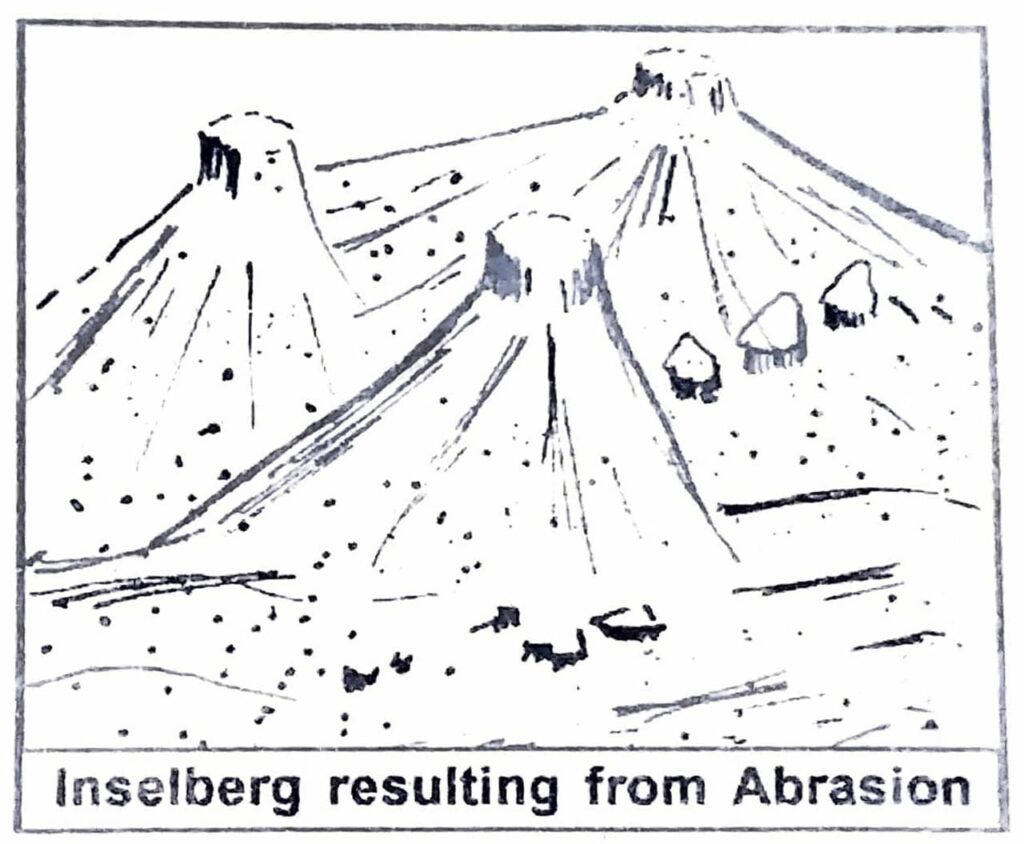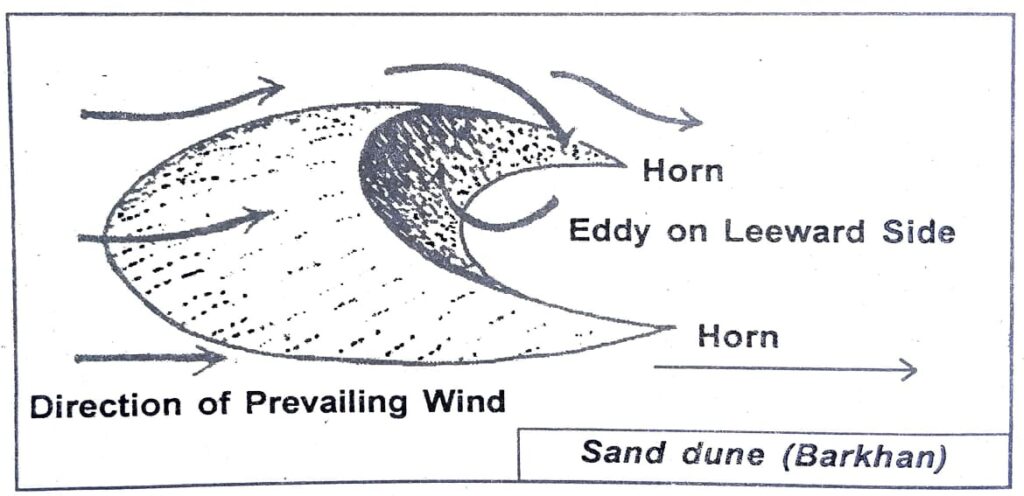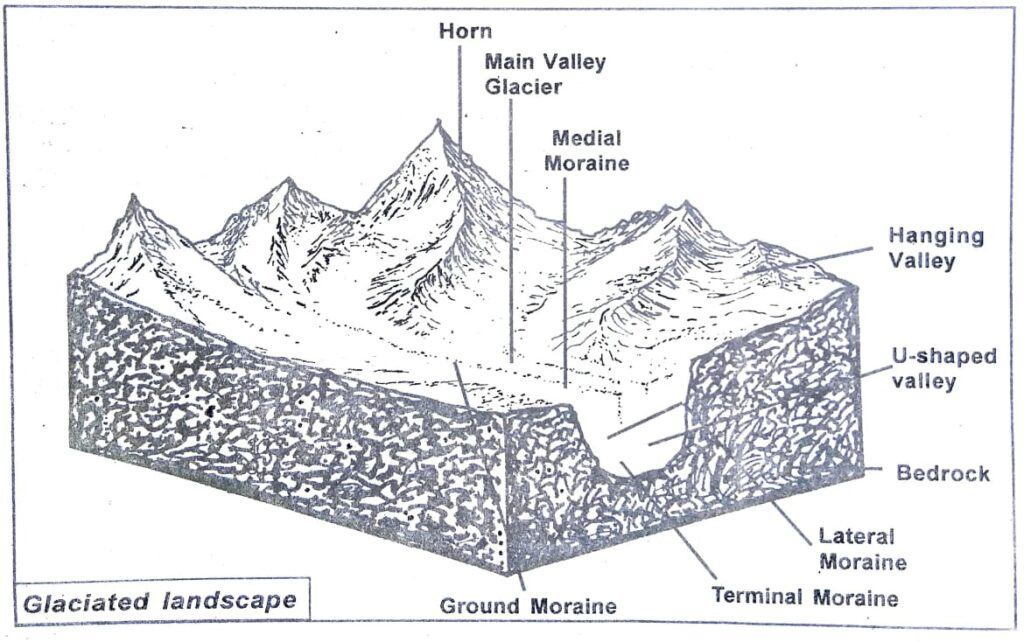Class 10 Elective Geography Chapter 1 Physical Geography Question answer to each chapter is provided in the list so that you can easily browse throughout different chapters Assam Board HS Class 10 Geography Elective Chapter 1 Physical Geography and select needs one.
Class 10 Elective Geography Chapter 1 Physical Geography
Also, you can read the SCERT book online in these sections Solutions by Expert Teachers as per SCERT (CBSE) Book guidelines. These solutions are part of SCERT All Subject Solutions. Here we have given Assam Board Class 10 Geography Elective Chapter 1 Physical Geography Solutions for All Subjects, You can practice these here.
Physical Geography
Chapter : 1
Textual Questions And Answers
Q.1. What is landform?
Ans: Landforms are natural features on the surface of the earth that are created by various geological processes. They can be either physical or biological in nature and include mountains, valleys, hills, plateaus, plains, and many others.
Q.2. Define geomorphology.
Ans: The study of endogenic and exogenic forces causing physical stresses and chemical actions on earth materials and bringing about changes in the configuration of the surface of the earth is called geomorphology.
Q.3. Write down the meaning of the geomorphic processes.
Ans: The geomorphic process means bringing about changes in the configuration of the Earths surface, due to physical stresses and chemical actions on materials present on earth.
Q.4. Mention the exogenic processes or factors.
Ans: Weathering, mass wasting, erosion, and deposition are the main exogenic processes. All the exogenic processes are covered under a general term- denudation, which means strip off or uncovers. The elements of nature capable of doing these exogenic processes are termed geomorphic agents (or exogenic geomorphic agents).
Q.5. What do you mean by the term ‘deflation’?
Ans: Deflation is the general decline of the price level of goods and services. Deflation is usually associated with a contraction in the supply of money and credit, but prices can also fall due to increased productivity and technological improvements.
Q.6. What is Inselberg? Explain with diagram.
Ans: Inselberg is a small, rounded hill, knob, ridge, or mini-mountain that rises abruptly from relatively flat surroundings. It is also called a monadnock.

Q.7. What is oasis? What is its significance?
Ans: Oasis is a region where water is naturally or artificially found amidst a desert. Places where groundwater rises to the top is generally considered as an oasis.
The location of oases has been of critical importance for trade and transportation routes in desert areas; caravans must travel via oases so that supplies of water and food can be replenished.
Q.8. What are sand dunes? How are they formed?
Ans: Sand dunes are a low hill-like shape formed by means of the deposition of sand in the deserts. While the wind blows, it lifts and transports sand from one place to another. While it stops blowing, the sand falls and gets deposited in low hill-like systems. These are referred to as sand dunes.

Q.9. What is abrasion? What are the features formed due to abrasion?
Ans: Abrasion is the erosion caused by suspended particles colliding with solid things.
Very small particles of rocks are hit against the rock surfaces which lead to the formation of some characteristic features of desert like Zeugens, Rock pedestals and Yardangs. The movement of particles causes the surface to get lowered and forms depressions.
Q.10. Define attrition.
Ans: Attrition is one of the processes of wind erosion in the desert. In this process, the sand and rock particles are broken into smaller pieces through their mutual collision while being carried by high velocity winds in deserts.
Q.11. What are glaciers? What is the reason for their slow movement?
Ans: Glaciers are “rivers of ice” which too erode the landscape by bulldozing soil and stones to expose the solid rock below.
to flow very slowly. Ice is a soft material, in comparison to rock, and is much more easily deformed by this relentless pressure of its own weight
Q.12. What are the different types of glaciers? Write briefly about each of them.
Ans: The different types of glaciers are:
(i) Continental glacier.
(ii) Mountain Glaciers or Alpine. Or Valley Glaciers.
(iii) Piedmont Glaciers.
(i) Continental Glacier: These are extensive ice blocks which covers the polar regions.Northern Canada, Greenland, Scandinavia, Antarctic etc are extensively covered by the continental glacier. These glaciers move downslope very slowly according to the surface gradient.
(ii) Mountain Glacier: These glacier originate in the high altitude region of the mountains. They are mostly found in the Alps of Europe, the Rockies of North America and the Himalayas of Asia. Generally they flow through the valley confined between two mountain ranges. They are comparatively little faster than the continental glaciers.
(iii) Piedmont glacier: The glaciers that are formed due to convergence of several mountain glaciers at the foothill zone are known as piedmont glaciers. As these glaciers originate in the piedmont zone of the mountains, they are called piedmont glaciers. Such glaciers are common in Alaska of North America.
Q.13. Draw a figure to show the shape of a glacier valley.
Ans:

Q.14. Write what is a hanging valley.
Ans: Hanging valleys are typically formed when the main valley has been widened and deepened by glacial erosion, leaving the side valley cut off abruptly from the main valley below.

Q.15. What are moraines? What are their different types? Show the location of different moraines with the help of a figure.
Ans: A moraine is material left behind by a moving glacier. This material is usually soil and rock. Just as rivers carry along all sorts of debris and silt that eventually builds up to form deltas, glaciers transport all sorts of dirt and boulders that build up to form moraines.
Moraines are divided in the following four types.
These are:
(i) Lateral moraines.
(ii) Ground moraines.
(iii) Medial moraines.
(iv) Terminal moraines.
(i) Lateral moraines: Moraines which are formed along the sides parallel to the glacial valleys are called lateral moraines.
(ii) Ground moraines: Moraines which move along the bottom bed of the glacier valley are known as ground moraines.These are formed as a result of the deposition of Sediments by a valley glacier which while moving rapidly fails to carry the sediment loads and begins to leave an irregular sheet.
(iii) Medial moraine: When two glaciers join at a particular spot in the valley, their lateral marines along unite together and start flowing in the centre of the glacier valley. The moraines that move along the middle course of the glacier are known as medial moraines.
(iv) Terminal moraine: Terminal moraine is a ridge formed by the deposition of sediments carried down by a glacier which gets accumulated at the end of a valley glacier. It consist of large angular boulders.
Q.16. Based on your general knowledge, state how global warming may have its various effects on glaciers.
Ans: Global warming is causing glaciers to melt at an alarming rate, which is having several effects.
Some of the effects of global warming on glaciers are:
1. Melting: The primary effect of global warming on glaciers is that they are melting at an accelerated rate. The warmer temperatures are causing the ice to melt faster than it can accumulate, leading to a reduction in glacier size.
2. Sea level rise: The melting of glaciers is contributing to sea level rise. As glaciers melt, the water flows into the oceans, causing sea levels to rise. This can have significant impacts on coastal communities.
3. Changes in water supply: Glaciers are a critical source of freshwater for many regions, especially in arid areas. As glaciers melt, the water supply to these regions may be disrupted, causing water shortages and potentially leading to conflicts over water resources.
4. Ecological impacts: Glaciers are home to unique ecosystems that are adapted to the extreme conditions of high altitude and low temperatures. As glaciers melt, these ecosystems are disrupted, and many species may be lost.
5. Increased risk of natural disasters: Glacial meltwater can cause natural disasters such as floods and landslides.

Hi, I’m Dev Kirtonia, Founder & CEO of Dev Library. A website that provides all SCERT, NCERT 3 to 12, and BA, B.com, B.Sc, and Computer Science with Post Graduate Notes & Suggestions, Novel, eBooks, Biography, Quotes, Study Materials, and more.





Can we get some Extra Questions for this chapter
Answers is not finding
Not getting
Hhhhh
It’s from SEBA or from another school/ college
SEBA